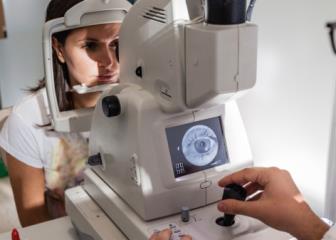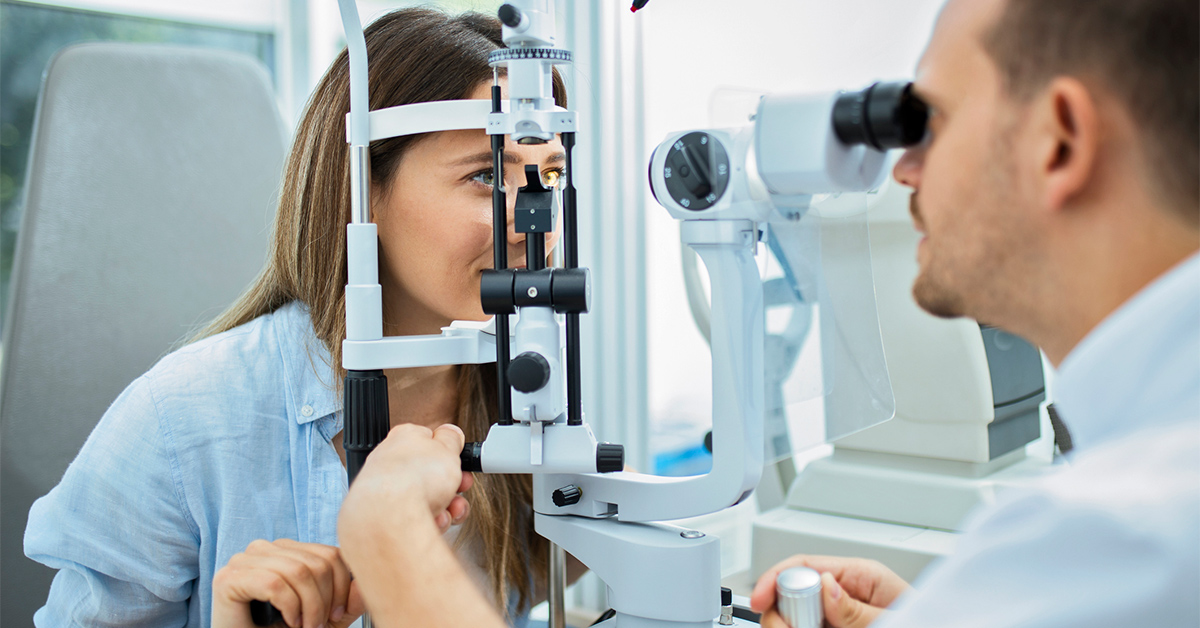Exploring the Most Recent Technical Developments in Optometry and What They Mean for Eye Doctors
In the ever-evolving field of optometry, current technical improvements are improving exactly how experts approach eye care. From the accuracy of Optical Coherence Tomography to the nuanced understandings supplied by AI-driven diagnostic devices, these technologies are setting brand-new requirements in client assessment and therapy. Teleoptometry is poised to redefine accessibility, making sure that knowledge goes beyond geographical restrictions. As these innovations penetrate the method, eye doctors are confronted with the obstacle of accepting these devices to enhance individual results. Yet, the inquiry remains: exactly how will these technical shifts redefine the functions and obligations within the occupation?
Technologies in Diagnostic Equipment
Progressing the field of optometry, technologies in diagnostic devices have transformed the means eye treatment experts examine and diagnose visual problems and ocular problems. The past decade has actually witnessed significant technological innovations, making it possible for more accurate and extensive analyses. Optical Coherence Tomography (OCT), for example, supplies high-resolution cross-sectional photos of the retina, enabling the early detection of illness such as glaucoma and age-related macular degeneration. This non-invasive imaging method has actually ended up being indispensable in modern optometric technique.
An additional secret innovation is the intro of sophisticated corneal topography systems, which map the surface area curvature of the cornea with accuracy. These devices are particularly valuable for fitting call lenses and detecting corneal conditions. Digital retinal imaging has actually transformed standard ophthalmoscopy, offering comprehensive, breathtaking views of the retina that assist in comprehensive visual exams.
The advancement of wavefront aberrometry has additionally been vital, making it possible for the analysis of refractive mistakes with unmatched accuracy (Eye Doctor). This technology assists in customizing restorative lenses and boosting medical results for refractive surgeries. Jointly, these diagnostic advancements equip optometrists to provide exceptional individual treatment, making sure early treatment and tailored therapy methods, ultimately improving aesthetic health and wellness end results
AI in Person Monitoring
Structure on the structure of sophisticated diagnostic devices, the incorporation of synthetic knowledge (AI) in individual management represents a transformative leap for optometry. AI systems are significantly utilized to improve efficiency, accuracy, and customization in patient care.
In addition, AI-driven systems promote structured patient interactions and administrative processes. Automated organizing, digital appointments, and personalized follow-up plans not just improve individual fulfillment yet also maximize time management for specialists. These systems can triage individuals based upon the seriousness of their problems, guaranteeing that those in essential requirement obtain prompt interest.
Additionally, AI boosts decision-making by giving optometrists with evidence-based suggestions and therapy paths. By incorporating data from electronic health and wellness documents, AI tools provide understandings that notify scientific choices, reducing the danger of mistakes and boosting patient results. As AI proceeds to develop, its duty in client management will likely expand, improving the landscape of optometric care.
Advancements in Retinal Imaging
In the realm of optometry, retinal imaging has observed amazing technological improvements that are improving analysis abilities and individual care. Developments such as Optical Comprehensibility Tomography (OCT) and fundus digital photography have revolutionized how eye doctors analyze the retina and picture.
Improved imaging techniques like OCT angiography are further refining diagnostic accuracy. This non-invasive strategy maps blood flow in the retina, supplying important understandings into vascular health without the requirement for dye injections. Furthermore, adaptive optics innovation is being integrated right into retinal imaging systems to deal with eye aberrations, delivering unmatched picture quality. Such innovations assist in the recognition of min retinal changes that can represent disease development.
Moreover, innovations in expert system are boosting retinal imaging by allowing automatic analysis of big datasets. These systems aid optometrists in determining patterns a sign of pathology, thus enhancing analysis precision and efficiency. see this here Collectively, these innovations are changing retinal imaging into a foundation of contemporary eye treatment, enhancing results and expanding healing possibilities.
Teleoptometry's Growing Function
Teleoptometry is significantly becoming an important part of eye care, driven by advancements in data and diagnostic tools. As optometry embraces digital transformation, teleoptometry promotes remote examinations, permitting optometrists to expand their services past typical limits. This is specifically useful in underserved and rural locations where accessibility to specialized eye care is usually limited. By leveraging high-resolution video conferencing and advanced retinal imaging, optometrists can perform extensive eye examinations from afar, making sure prompt diagnosis and treatment.
The integration of man-made knowledge (AI) more boosts teleoptometry, allowing the evaluation of visual data and helping in the discovery of ocular problems such as glaucoma and diabetic retinopathy. AI-powered formulas can quickly interpret complicated imaging information, offering eye doctors with important insights that strengthen professional decision-making.
In addition, teleoptometry supports connection of treatment resource via smooth assimilation with electronic health and wellness documents (EHRs), enabling optometrists to keep extensive person backgrounds. This ensures that clients obtain regular and personalized care also when seeking advice from different specialists.
Despite these benefits, difficulties stay, consisting of making sure information protection and managing person assumptions. Teleoptometry stands for a significant stride in the direction of more available, reliable, and patient-centered eye care. As technology progresses, its function is poised to broaden additionally.

Future Patterns in Eye Care
A myriad of innovative patterns is established to reshape the future of eye treatment, driven by technological advancements and the advancing requirements of people. One considerable fad is the assimilation of artificial knowledge (AI) in diagnostics, which assures to improve the precision and efficiency of eye exams. AI formulas can evaluate large quantities of information from retinal pictures, possibly finding problems like diabetic retinopathy and glaucoma earlier than traditional techniques.
In addition, customized medication is obtaining grip in optometry, with hereditary screening educating customized therapy strategies. This strategy aims to maximize individual end results by tailoring treatments to specific hereditary accounts. Wearable technology, such as wise get in touch with lenses, is additionally imminent, supplying real-time tracking of intraocular pressure or sugar levels, hence providing constant insights into systemic and ocular health.
The adoption of increased truth (AR) and virtual truth (VIRTUAL REALITY) in training and person education and learning is an additional emerging fad. These innovations offer immersive experiences that can enhance understanding and skills both for optometrists and people. As these trends read this post here advance, eye doctors must remain abreast of technical advancements to provide sophisticated care, ensuring improved person end results and contentment in the dynamic landscape of eye treatment.
Conclusion

Jointly, these diagnostic advancements equip optometrists to supply exceptional patient treatment, ensuring early treatment and customized therapy approaches, eventually boosting visual health and wellness results.

As these modern technologies proceed to evolve, optometrists should adapt and incorporate them right into method, inevitably enhancing process effectiveness and boosting the standard of eye care supplied to patients.